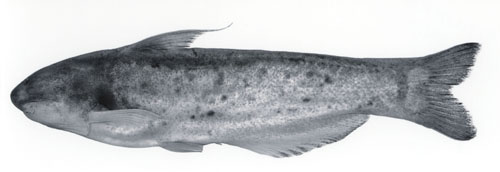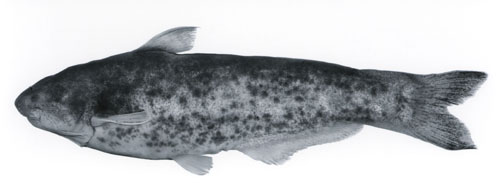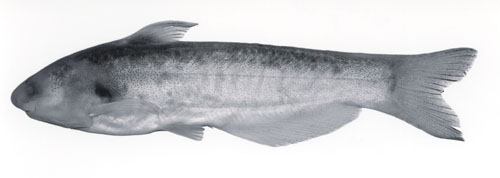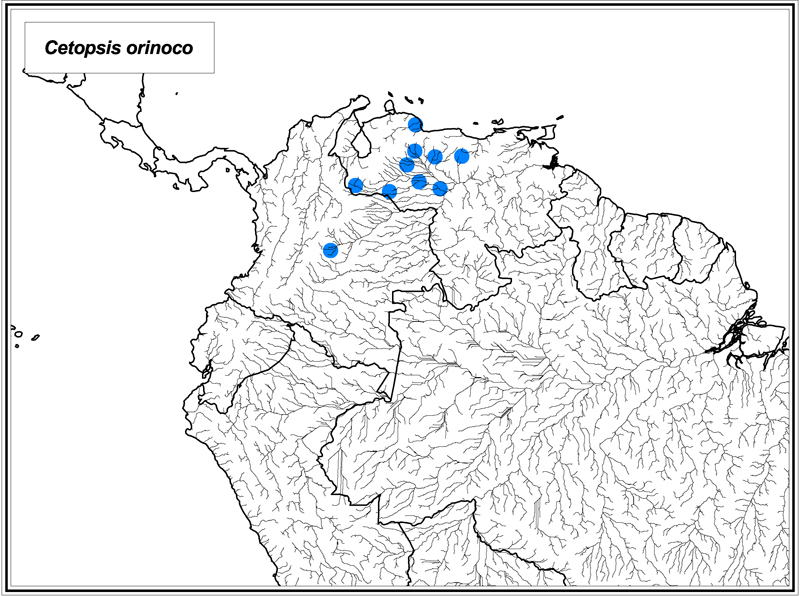


Reproduced from Vari, Ferraris and de Pinna (2005).
Cetopsis orinoco (Schultz, 1944)
Identification: Cetopsis orinoco can be distinguished from all of its congeners by the combination of the presence of an eye, the conical teeth on the vomer and dentary, the rounded posterior nares which is distinctly separated from the contralateral nares by a distance greater than the width of the posterior nares, the presence of a dark humeral spot, the lack of a pattern of dark pigmentation on the pectoral and pelvic fins other than for a thin, clear margin, the presence of dark pigmentation on the caudal fin, particularly on the distal portions of the fin, and the possession of 30 to 35 caudal vertebrae, 44 to 46 total vertebrae, 23 to 30 total anal-fin rays, and 19 to 24 branched anal-fin rays. Maximum size: 101 mm SL.
Range: Cetopsis orinoco occurs in the rivers of the eastern slope of the piedmont of the Cordillera Oriental and the southeastern slopes of the piedmont of the Cordillera of Merida in the Rio Orinoco basin of Colombia and Venezuela and in the Rio Aroa and Rio Yaracuy basins of the Caribbean Sea versant of northern Venezuela.
Information from Vari, R. P., C. J. Ferraris Jr. & M. C. C. de Pinna. 2005. The Neotropical whale catfishes (Siluriformes: Cetopsidae: Cetopsinae), a revisionary study. Neotropical Ichthyology 3:127-238.
